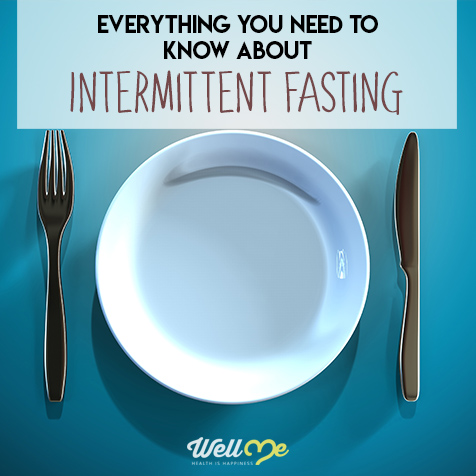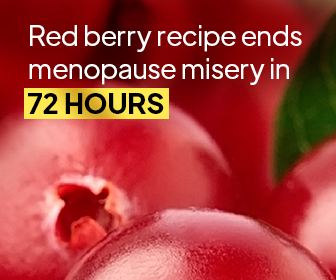Dieting, exercising, and eating lots of plant-based foods have all been considered healthy ways of eating. But what about carefully scheduling your eating habits? Could that be healthy too? This is what intermittent fasting is, and it’s quickly gaining a great deal of interest.
Because choosing not to eat has generally been associated with poor health, fasting or intermittent fasting is sometimes frowned upon. Many people think that strategically choosing not to eat during certain periods of time is a bad thing — but do we really know that? Does the research perhaps show otherwise?
There are a number of different methods of intermittent fasting, but all of them have at least one thing in common: they tell you when to eat. Intermittent fasting is all about the scheduling in order to maximize your energy levels, lower your body fat, increase your muscle mass, and be the healthiest person you can be. In this article we’ll cover what intermittent fasting really is, and how it can help you to start living your healthiest life.
What is Intermittent Fasting?

To put it simply, intermittent fasting involves cycling between periods during which you eat and periods in which you don’t eat (fasting). It’s important to remember that intermittent fasting is all about the timing of eating and says nothing specific about what exactly you are eating. This makes it easy to customize it to your own preferences and lifestyle. With intermittent fasting, some people choose to count the calories they are taking in or recording the food in some other way, but other people simply eat during specified times. Both methods have proven to be effective.
The most popular form of intermittent fasting usually consists of 16 hours of fasting and 8 hours of eating. That doesn’t mean you’re eating for the entire eight hours of your eating period, but rather that all of your normal eating is done within that time rather than throughout the entire day. The idea is simply to extend your normal period of fasting (done while you sleep, for most people approximately 8 to 10 hours) to a longer period of time each day.
Believe it or not, intermittent fasting is actually not as difficult as it sounds. First of all, certain drinks are allowed during the fasting periods. This includes coffee, tea, and other beverages that have few to no calories. Sometimes foods that contain extremely low amounts of calories are also allowed during the fasting period — this depends on the type of intermittent fasting you are doing. Supplements are also okay, unless they have a calorie content.
Second, people have actually said that they feel more energy during their fasting periods, not less. Many people who haven’t tried it before are particularly concerned about feeling hungry or drowsy when they’re going through those periods of eating little to nothing. This could be true for the early days, while your body is still adapting. But the amazing long-term benefits outweigh this potential temporary negative side effects.
Fasting Throughout Human History
People are often skeptical about trying intermittent fasting — and oftentimes for good reason. If it is done poorly or does not include good, nutritious food during the eating periods, it certainly would not be good for anyone’s body. That said, fasting in general should not be feared. After all, humans have been doing it in some capacity for thousands of years.
Fasting has been a part of human life for ages. Sometimes we fast instinctively, other times we make a conscious choice to do it. Sometimes humans had to do it without wanting to, and therefore our evolved bodies are accustomed to it. One example of an instinctive kind of fasting is when we are sick. When feeling ill, we will often lose our appetites and therefore will have a short period of fasting.

Our hunter-gatherer ancestors were restricted to the foods they managed to hunt as well as what could be gathered, and that meant that during periods of bad weather or other reasons food wasn’t found at a certain time, they fasted without wanting to.
This is one reason why our bodies are so equipped for fasting in the first place. Fasting has also always been a part of some of the biggest religions in the world – oftentimes it is even specifically mandated for certain days or during certain periods of time, depending on the religion and the season.
Fun Fact: Fasting has been mandated in some form by many religions around the world, including Buddhism, Islam, Judaism, and Christianity.
These points at least do away with some false stereotypes about fasting, including the thought that it is somehow not a natural process. Indeed, the human body is known for its excellent adaptivity and studies have even shown that the body jumps into high gear in a healthy way when some kind of fasting occurs[1].
The Benefits of Intermittent Fasting
It may seem counterintuitive to think that intermittent fasting actually benefits the body and kicks it into high gear, especially since food is our fuel. Nonetheless, there are a number of studies that have shown intermittent fasting of some kind of be beneficial to a variety of health aspects. For one thing, intermittent fasting has been shown to assist in cell repairs, genes, and hormonal functions[2]. It helps with other aspects of health, including fat burning and weight loss[3], as well as potentially even increasing a person’s lifespan (as seen in studies with rats and mice)[4] [5].

Intermittent fasting has even been connected with health benefits for people with cancer or who are undergoing chemotherapy. One study, for instance, shows that people with cancer who do intermittent fasting before their chemotherapy may have a higher rate of being cured and a lower rate of death[6]. One of the major downfalls of chemotherapy are its side effects. Intermittent fasting has actually been associated with reducing the severity of these side effects[7].
For people who don’t have cancer, intermittent fasting has been shown to potentially lower the chances of getting cancer or heart disease in the first place[8]. But what does intermittent fasting do, exactly? In other words, why does it have these health benefits?
For one thing, the levels of Human Growth Hormone (also known simply as the “HGH”) begin increasing when you’re in a period of fasting. This this happens in order to give your body easier access to your fat stores, which in turn leads to more efficient burning of fat (and, thus, the losing of weight and the gaining of muscles)[9] [10]. Additionally, your body becomes more sensitive to insulin, which means you need less of it to function. Thus, the levels of insulin drop, which again helps your body access more fat in your body (and keeps diabetes at bay)[11].
As mentioned above, your cells start repairing themselves during a period of fasting. Your body’s cells will also get rid of proteins that are old and no longer functioning and are therefore essentially just taking up space in your body[12]. Finally, intermittent fasting helps to protect your genes from getting diseases and helps support the genes that lead to longer life spans[13].
Of course, the physical health benefits are not the only kinds of advantages you will see with starting an intermittent fasting routine. Indeed, when people are only eating two meals per day rather than three or more (especially when you include snacks), they end up saving a lot of meal preparation and eating time. And who couldn’t use having some extra time on their hands?
Types of Intermittent Fasting

As mentioned briefly above, the most common type of intermittent fasting is called the “16/8 Method” or “Daily Intermittent Fasting.” This means that you’ll limit your eating to an 8-hour window of time, and the remaining 16 hours of the day will be spent fasting. Keep in mind, of course, that a significant chunk of this time will be spent asleep, so it’s not like you’ll be spending your day in hungry misery.
There are other methods of intermittent fasting as well. One of these is commonly referred to as “Eat-Stop-Eat” or “Weekly Intermittent Fasting.” It involves a regular eating schedule (three meals a day, for example, or whatever is normal for you) most of the time, but one or two days out of the week you fast for 24 hours. This fasting period specifically takes places between dinner on the first day (as your last meal before the fast) and dinner on the second day (as your first meal after the fast). Some people prefer to go from lunch on day one to lunch on day too as well. This is oftentimes a good way to get started with intermittent fasting.
A third method of intermittent fasting is called “the 5:2 Diet.” It is called a diet because it isn’t strict fasting, per se, but it involves restricting your caloric intake to between 500 and 600 calories for two days out of every week. This helps your body go into “fasting mode” without actually cutting out food for an entire day. There are plenty of other techniques out there, including “Alternate Day Intermittent Fasting,” which is similar to the 5:2 Diet because it keeps 2 days out of the week for fasting. In this case, however, it is actual fasting rather than just dieting or restricting the calorie intake.
A common belief is that breakfast is the most important meal of the day. Some people will even say that skipping breakfast could cause you to gain weight. In reality, however, skipping or eating breakfast makes no difference in terms of losing weight.
Common Mistakes with Intermittent Fasting
As with anything in life, intermittent fasting is not quite as easy as it sounds. Even though it is easier to do in practice than just about any diet, there are still certain things that need to be taken into consideration before jumping right in. People who jump in too quickly often make some specific mistakes. To help you avoid making those mistakes, let’s look at some of the most common ones.
You ignore what you’re eating

Because intermittent fasting is so focused on when you should be eating, some people see this as enough work in and of itself, and therefore don’t pay attention to the actual quality of food that they’re eating during the non-fasting periods. Worse yet, they may even use their fasting as an excuse to eat junk food, since they “deserve” it after their hard work of fasting. The truth is, however, that intermittent fasting actually makes your body even more sensitive to the food that you are consuming. That means that nutrient rich foods are important, especially because without them you’d just be constantly feeling hungry.
You diet during the eating times
Sometimes people get a little too obsessed with losing weight. Instead of eating properly during the eating periods, they keep restricting how many calories they take in. This would likely lead to undereating, which is quite unhealthy and unsustainable for the body.
You do too much exercising and fasting right off the bat

When someone gets into intermittent fasting, they might get too excited and jump in headfirst to both fasting and exercising. For someone who has not been exercising or eating properly for most of their life, this can be a shock to the system. Someone who overdoes it could end up with what’s known as adrenal fatigue, which means your body will be completely exhausted for days. Therefore, start off slow.
You aren’t staying hydrated
It’s important to remember that fasting is not about reducing all consumption, but just about caloric intake. That means that water can — and should — still be consumed during the fasting periods. In fact, you should even drink more water than usual when you aren’t eating! Some people even like to start with carbonated water, since that keeps their belly feeling fuller.
Summary: What Should You Do Now?
In summary, intermittent fasting is a great way to kickstart your bodily processes into becoming a healthier you. You could reduce the risk of disease, feel more energized, and lose weight, just by timing your food intake.
So, what now? If you are convinced and want to try intermittent fasting, you should remember to start slow. If you’ve been eating junk your whole life, make sure to educate yourself on the kinds of foods that are jam-packed with the nutrients and fuel that you need. Once you start the fasting, start out slowly and less frequently, and then go from there.
As you get into it and your body starts adapting, you can introduce some exercise into your routine. Remember, if you start too quickly, you can get fatigued. So be sure to be consistent and patient!

Action Steps: Tips for Starting Intermittent Fasting
First, formulate your plan. If you are taking some kind of medication or have a health condition of some kind, be sure to consult your doctor to see if intermittent fasting is a good idea for you. Make your plan according to your normal habits to keep it as simple as possible to get started. Once you have a plan, ease into intermittent fasting by incorporating the following steps over a period of five days:
- On the first day, don’t snack at all after you have eaten dinner. Drink tea or water to help you get through it, especially if you are used to snacking in the evening.
- On the second day, eat a later breakfast than normal. You have already gone around 12 hours without food, so simply delay your breakfast until you have already arrived at work in the morning.
- On the third day, try to keep from snacking between lunch and dinner. Again, drink lots of water or tea to curb cravings.
- On the fourth day, don’t eat breakfast. You can instead have an early lunch at 11 AM instead of your delayed breakfast at 10 AM — one hour later won’t be too bad!
- On the fifth day, simply continue what you’ve been doing. Congratulations, you have already successfully begun your 16/8-method intermittent fasting routine!
Starting out with these simple steps helps you get into intermittent fasting in a healthy and less daunting way. Taking one step per day to get closer to your goal will be easier on your mind as well as easier on your body. We hope this made your transition into an intermittent fasting routine easy and effective.
References
- [1] http://www.sciencedirect.com/science/article/pii/S0104423013000213
- [2] http://www.sciencedirect.com/science/article/pii/S0104423013000213
- [3] https://www.ncbi.nlm.nih.gov/pubmed/20815899
- [4] http://jn.nutrition.org/content/31/3/363.full.pdf
- [5] http://ibimapublishing.com/articles/ENDO/2014/459119/
- [6] https://www.ncbi.nlm.nih.gov/pubmed/19135806
- [7]https://www.ncbi.nlm.nih.gov/pmc/articles/PMC2815756/
- [8] http://ajcn.nutrition.org/content/86/1/7.full
- [9] https://www.ncbi.nlm.nih.gov/pmc/articles/PMC329619/
- [10] https://www.ncbi.nlm.nih.gov/pubmed/12425705
- [11] https://www.ncbi.nlm.nih.gov/pubmed/15640462
- [12] https://www.ncbi.nlm.nih.gov/pmc/articles/PMC3106288/
- [13] https://www.ncbi.nlm.nih.gov/pubmed/24048020
- Fun Fact Source #1: https://www.britannica.com/topic/fasting
- Fun Fact Source #2: https://www.ncbi.nlm.nih.gov/pmc/articles/PMC4095657/








